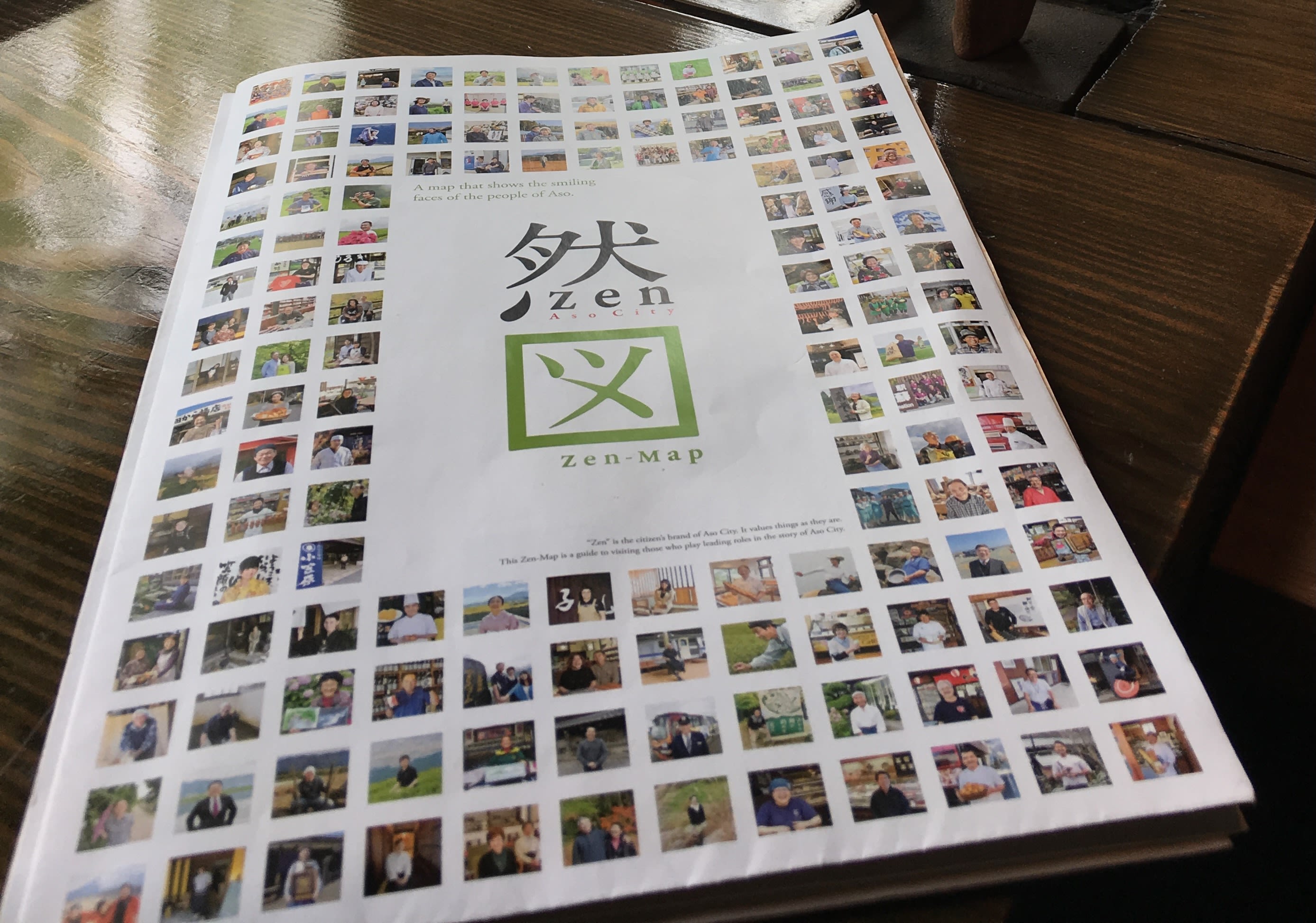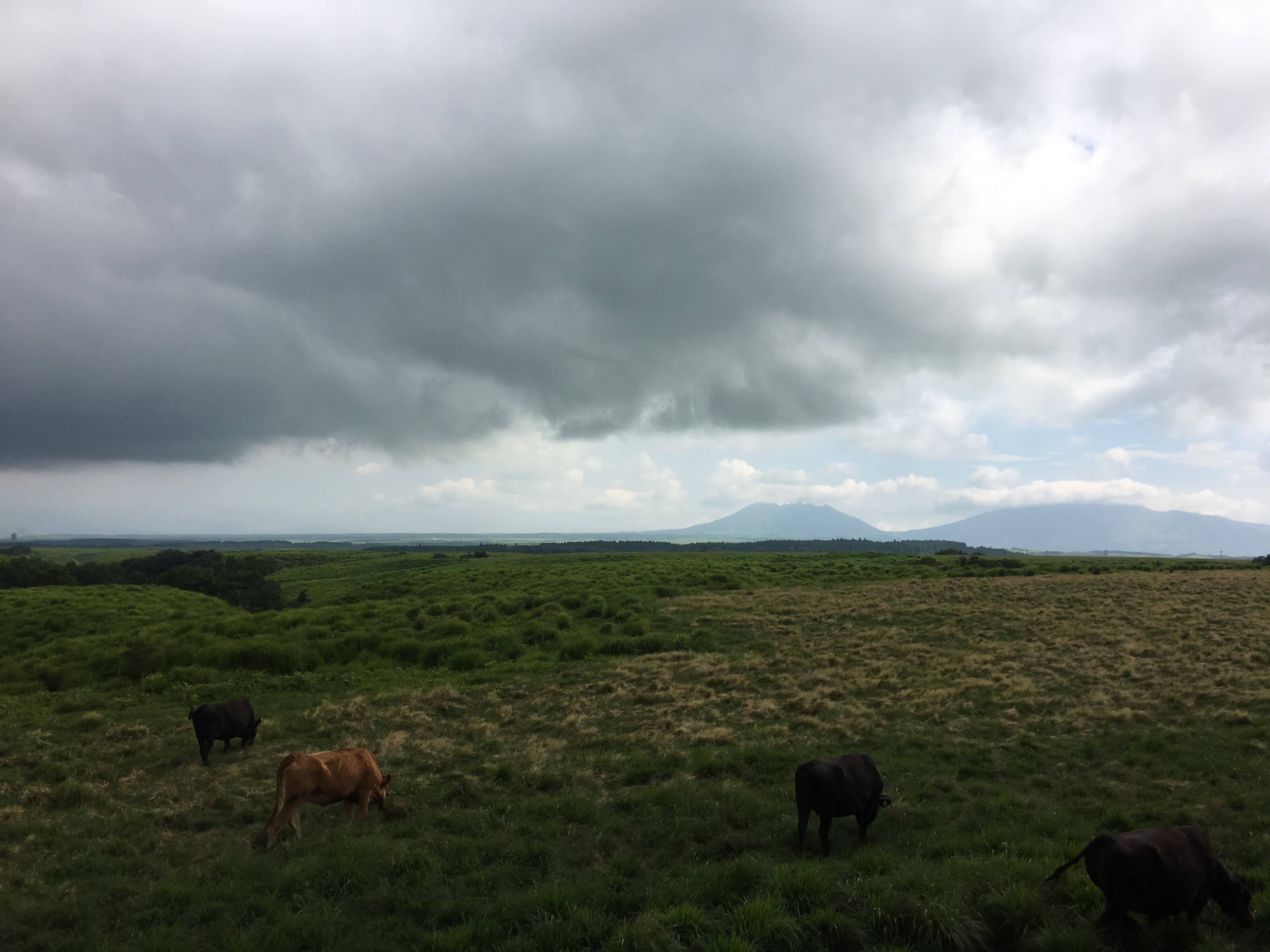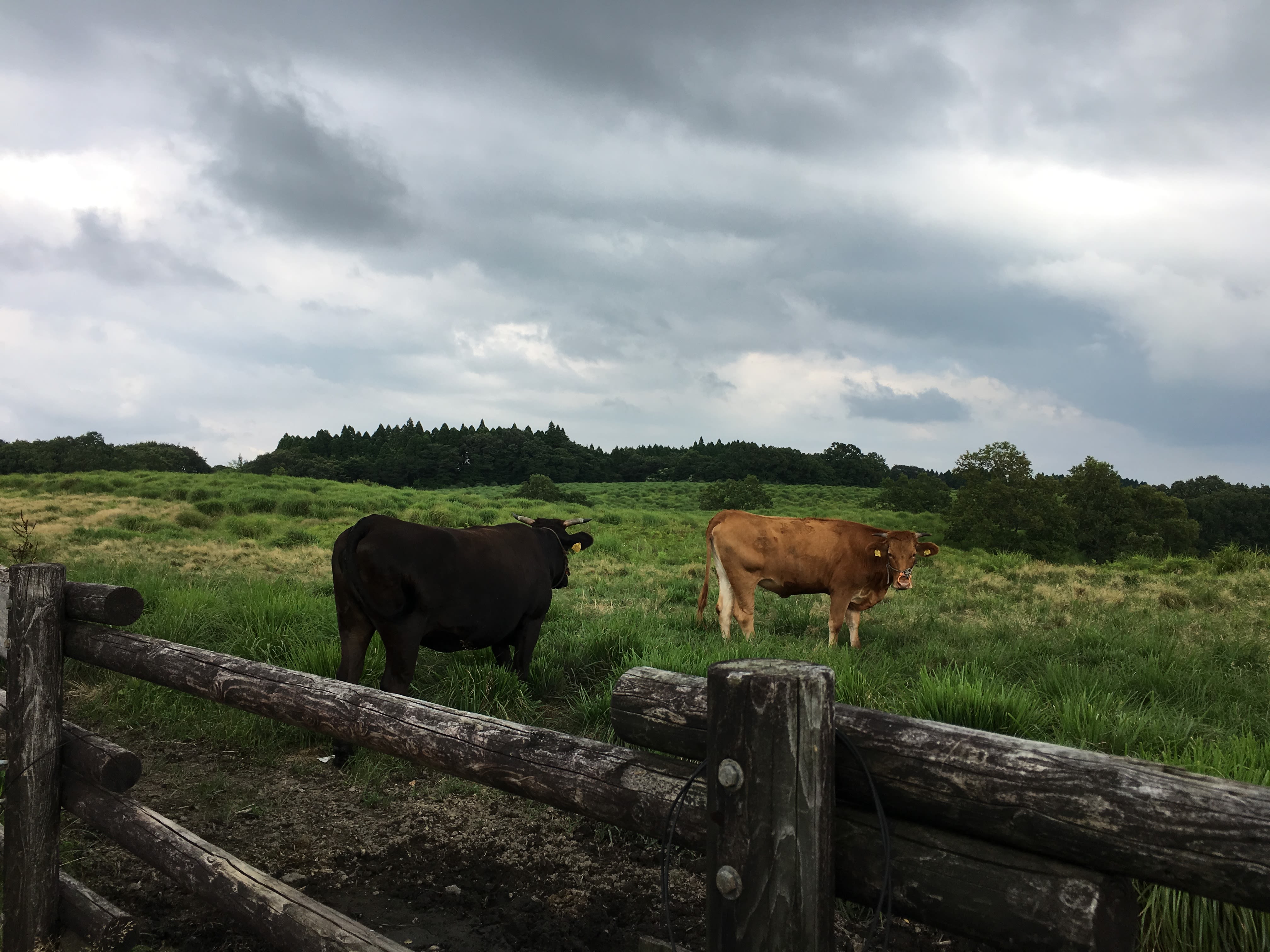Aso
The Deep Dive—Project Zen Map

It was past lunchtime when I pulled in to Aso, and my grumbly stomach reminded me that my first order of business was to find somewhere to eat. As I drove amidst the gradually deepening green forest, my eyes were suddenly drawn toward a shop framed by an alluring avocado-colored sign that read simply, “Zen”.
I was briefly disappointed to find out that this was not a restaurant called Zen, but was, rather, a stand serving taiyaki (sweet, fish-shaped bread filled with adzuki red bean paste).
This let-down quickly transformed into intrigue, however, when exuberant shop owner Uno Shinobu handed me two pamphlets—one in Japanese and one in English—titled “Zen Map”, which had explained the sign I’d seen earlier.
Uno told me that this was a branding initiative undertaken in Aso to introduce artisan crafts, traditional inns, restaurants and cafes, sightseeing spots, and other local areas that would be of interest to visitors. Initiated in 2013, the project was also later poised to help with local revitalization efforts following the devastating 2016 earthquakes in Kumamoto City, which caused heavy damage to the Aso region.
With more than 100 different locations profiled, I could have spent a full week in the region and not even begun to scratch the surface of everything available to see, visit and experience. As there was only one night in Aso on my itinerary, however, I had to choose carefully.
I struck gold with my choice of accommodation from among the Zen Map’s numerous listings, opting for a ryokan (traditional Japanese-style inn) called Irifune that was located in Uchimaki, an onsen district in the northwest of the city.
Following a comfortable sleep,
an incredible soak in their atmospheric bath,
and an exquisite breakfast,
...the next morning,clad in my yukata (summer kimono),
...I spent the next several hours taking in the area’s dramatic natural scenery.
After consulting my Zen Map in my quest toward a good recommendation for lunch, I found that my first-choice option, Sakura—a barn/storehouse that had been converted into a café—turned out to be closed.
Another establishment on the same premises, however, Olmo Coppia— Italian for “two elm trees”, after the pair of trees fronting the restaurant—was open and offered a similarly attractive vibe.
My friendly server told me that many of their fresh vegetables were harvested from the organic garden shared with Sakura, including the delicate baby tomatoes that accompanied my tasty pasta lunch.
I nearly missed my last visit to a Zen Map establishment but for a lucky twist of fate. While on my way out of town after lunch heading toward Beppu, I passed by a stall with a sign reading “Sweet Aso Corn”, and nearly kept going. Something, however, told me to turn around. It turns out that my intuition that day was indeed on point, since the little roadside operation turned out to be one of the weirdest—and I do mean that in a good way—finds of my entire trip.
As soon as I opened my car door, I heard some fabulously mellow music floating through the ether. I turned to see a large bus sitting in the middle of a field across the road, which appeared to be serving as some type of DJ booth.
While offering me a sample of corn, one of the sweet ladies manning the stand told me that this was Aso no Mori (“Aso Forest”), which was begun by her son, and served as a hub for local and visiting musicians.
Leading me past the cows grazing behind the stall,


she then invited me to climb atop the small terrace for sweeping views of the grassy plains—an area she said served as a sort of evacuation shelter for neighbors who had lost their homes following the 2016 earthquakes.
Just when I thought my day couldn’t get any more interesting, I saw another sign advertising fresh sweet Aso corn not five minutes after I had hopped back into my rental car, and was therefore drawn to pull off the road yet again. This time I was attracted not by the actual stand itself, but by the sight that fanned out across the landscape just next to it: dozens—no, hundreds—of garden shrubs that had been sculpted into various intriguing shapes.
I bought a package of senbei (rice crackers) from the woman running the stand, who told me that this was the topiary handiwork of her brother-in-law. As I admired the spectacular sight while making my way back to my vehicle, I saw a very quiet and humble-looking man standing off to the side, and decided to take a chance by asking if he was in fact the artist responsible for these incredible creations.
He said that he was, and that he had been producing them for the past 50-some years after his father first began the practice. We exchanged business cards, and the man—whose name was Wakamiya Michio—pointed out some of his favorites: numerous birds of all shapes, baseball player Ichiro, and the iconic statue from the Nagasaki Peace Park.
Although this last stop was not included on the Zen Map, I finished my trip to Aso by offering silent thanks for the synchronicities that had worked together to introduce me to this valuable resource. I also included an extra wish for this project to continue to bring success to these talented, kind and deserving folks in their endeavor to support and showcase their own special community.
